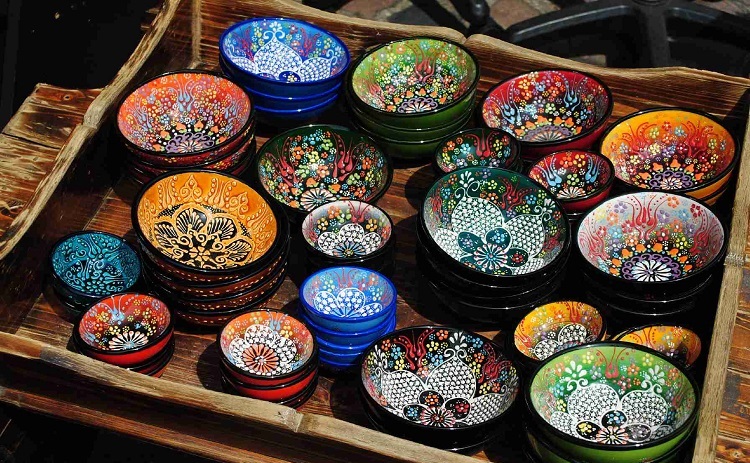What Separates Turkish Handicrafts from Those of Other Countries?
In many countries, including the US, the handicraft tradition is fading into the sunset. The causes are many and complex but tend to revolve around the rise of consumer culture and the attendant embrace of the disposable at the expense of the durable. Another cause is the loss of the craftsmen themselves as fewer and fewer people are opting for careers as artisans and instead entering careers related to the digital economy like programming, designing apps, SEO and digital marketing. There are however, still a few countries where making something by hand matters and chief among them is Turkey. But just what is it that separates Turkey’s handicrafts from those of other countries like India and Peru? In this post we’ll examine that question.

A Cut Above: The Handicraft Tradition of Turkey
While handicrafts have been on a slow inexorable decline in the West the tradition still clings to life in a number of notable countries around the globe. These include Peru, Iran, India and to a lesser degree places like Switzerland and Japan. None of these countries however can compare to Turkey when it comes to the production of dazzling, handcrafted items. But why is that?
- History: The first and perhaps most important reason Turkey emerged as such a powerhouse of traditional craftsmanship is its historical location bridging the worlds of Asia, Europe and the Middle East. For thousands of years the area has been the place where cultures came into direct contact with one another. Alexander the Great led his armies through Anatolia. The Persians occupied the area for centuries. Chinese pottery was brought to the region via the Silk Road in medieval times and the rich Islamic graphic tradition has had a profound effect as well. Add Rome and Byzantium into the mix and you have a region that is truly unique in the wealth of its cultural influences.
- Support: As Iberian conquerors spread across Central and South America and as their Northern European counterparts pushed ever further into North America they cast a jaundiced eye on local arts and crafts and wiped many of them off the face of the earth forever. In what is now Turkey however, each new wave of influence recognized and promoted the local handicraft traditions. Rather than demanding local artisans renounce their work they simply added their own influences to the existing crafts.Turkish porcelain took on aspects of Chinese porcelain. Turkish rugs reflected the influence of their Persian counterparts and local glassmakers were put to work adorning Byzantine cathedrals and palaces.
- Quality: Because Turkish handicrafts have enjoyed such a long, unbroken history they have reached a level of sophisticated refinement that’s second to none. The Arts and Crafts movement of the West was certainly a welcome development but many crafts have had to be relearned after decades, even centuries of neglect. Even then few of those who have embraced the movement are able to find apprentices to pass down what they’ve learned and so with each generation there is a reset. In Japan there are a number of ancient crafts that are protected by law but the numbers of craftsmen and women shrinks every year and some crafts are in danger of dying out completely. Even in places like Peru and India that are thought to be hotbeds of traditional arts and crafts the few crafts that are still practiced have been watered down and targeted for mass consumption by tourists.
- Variety: Perhaps the last major factor in determining why Turkish handicrafts have come to occupy such a special place in the collective consciousness of the human race is their sheer variety. From needlework to calligraphy to the stunning porcelain creations of artists like Nimet Varli, to Turkish mosaic lamps (which inspired the creation of the Tiffany lamp) Turkish handmade rugs, pottery and more the number of different crafts at which Turkish craftsmen excel is dizzying. No other country’s artisan traditions come anywhere close. And we haven’t even mentioned Turkish painting, literature and folk dancing all of which are very much alive and well here in the digital age.
Turkish handicrafts are a living reminder of the power of handmade objects to transcend the ordinary, enrich daily experience and mesmerize even the most die-hard digital disciple. There is truly nowhere else you can go on planet earth and find so many beautiful handmade objects of such breathtaking quality. Paykoc Imports is proud to provide these incredible artisans with a platform for presenting their wares to a wider public and we hope you’ll take the time to browse all the various Turkish handicrafts we have on offer both at our Denver retail outlet and in our online store. Turkish craftsmen and women are keeping the flame of handmade quality alive in an age where it is under siege from all sides. They deserve our support.

 Default Currency
Default Currency